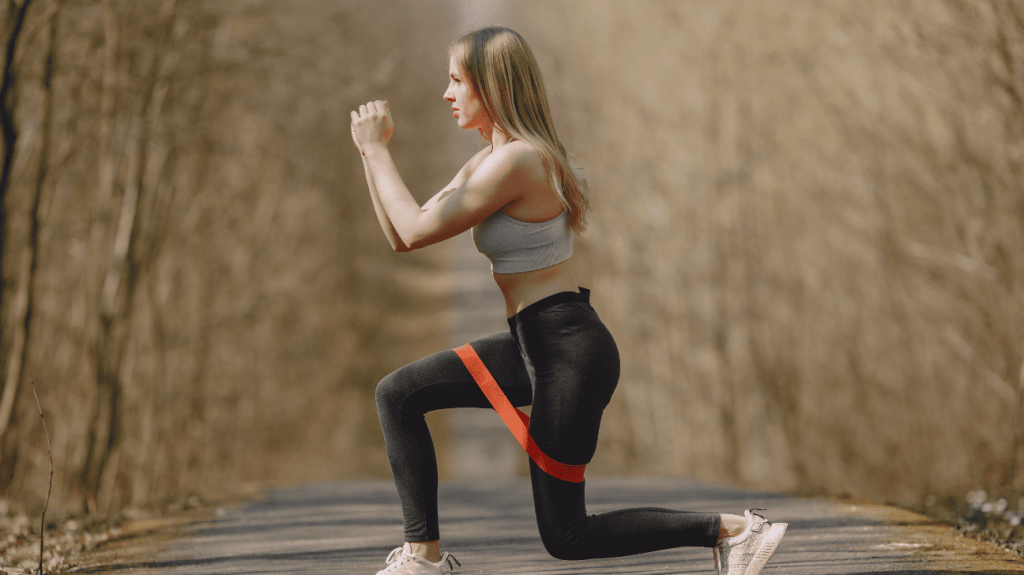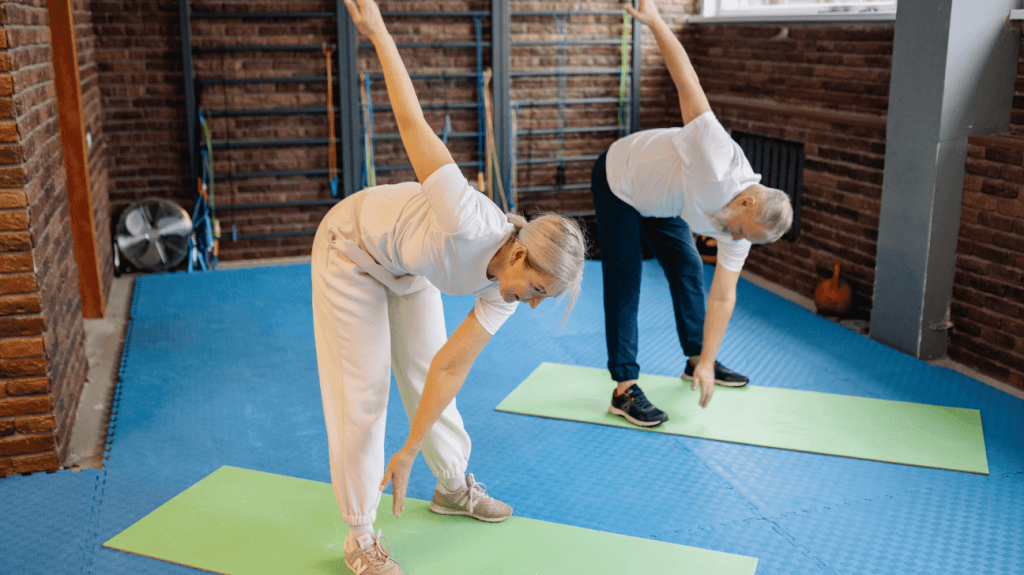Hiit or cardio for fat loss?
Well, when it comes to losing weight and burning fat, exercise is an essential component.
And two popular forms of exercise that people often turn to for fat loss are High-Intensity Interval Training (HIIT) and traditional cardio.
While both forms of exercise have their benefits, which one is more effective for fat loss?
In this article, we’ll explore the differences between HIIT and cardio and discuss which one may be better for fat loss.
The Benefits of HIIT for Fat Loss

- Burn More Calories: HIIT burns more calories than steady-state cardio in a shorter amount of time. HIIT workouts typically last between 20-30 minutes, while cardio workouts can last 45 minutes to an hour or more.
- Boosts Metabolism: HIIT can also boost your metabolism, which means your body will continue to burn calories even after your workout is over.
- Preserves Muscle Mass: HIIT workouts can help preserve muscle mass while burning fat. This is because high-intensity intervals stimulate muscle growth and retention, while low-intensity intervals help burn fat.
- Related: Hiit for weight loss!
The Benefits of Cardio for Fat Loss
- Lower Risk of Injury: Cardio exercises tend to be low-impact and are less likely to cause injury compared to HIIT, which can be high-impact and put a lot of stress on your joints.
- Better for Building Endurance: Cardio is better for building endurance, which can be helpful for athletes or people who want to improve their cardiovascular fitness.
- More Accessible: Cardio exercises are often more accessible than HIIT workouts because they require less equipment and can be done anywhere.
- Related: Hiit workout for obese beginners
Is HIIT or Steady State Cardio Better for Fat Loss?
| FACTS | Difference |
| HIIT: High-Intensity Training | short bursts of intense exercise |
| Cardio: Steady-state exercise | moderate intensity, longer time |
| Both burn fat and calories | HIIT: faster calorie burn |
| Cardio: steadier calorie burn | |
| HIIT has an “afterburn” effect | Higher afterburn than cardio |
| Both improve heart health | HIIT: anaerobic fitness |
| Cardio: aerobic fitness | |
| Cardio: often lower impact | Cardio: easier on joints |
| HIIT: more time-efficient | Greater benefits, less time |
| Both are adjustable | HIIT and Cardio: tailored to individual |
There is no doubt that both HIIT and steady-state cardio can help you lose fat.
However, studies have shown that HIIT may be more effective at burning fat in a shorter amount of time.
This is because HIIT workouts typically involve short bursts of high-intensity exercise, followed by periods of rest or low-intensity exercise, which can lead to a greater calorie burn both during and after the workout.
Steady-state cardio, on the other hand, involves maintaining a consistent level of moderate-intensity exercise for a longer period of time.
While both types of exercise can help with fat loss, it’s important to choose a workout that you enjoy and can stick to consistently.
If you prefer shorter, more intense workouts, then HIIT may be the better option for you.
However, if you enjoy longer, steady-state workouts, then that may be the way to go.
The most important thing is to find a form of exercise that you enjoy and can commit to on a regular basis.
HIIT or Slow Cardio for Fat Loss
In terms of fat loss, both HIIT and slow cardio are effective, but they target different energy systems.
Since it targets the anaerobic energy system, HIIT burns more fat and carbohydrates during and after training.
Slow cardio, on the other hand, targets the aerobic energy system, which primarily burns fat for energy during exercise.
While slow cardio can be effective for fat loss, it may not be as time-efficient as HIIT.
Fast cardio burns calories more slowly, while HIIT workouts burn calories more quickly.
As a result of the afterburn effect, HIIT workouts may burn more calories during and after the workout.
- Related: HIIT for beginners weight loss!
HIIT or Cardio for Belly Fat

It is possible that HIIT can be more effective than traditional cardio at targeting belly fat.
The reason behind this is that belly fat is mainly visceral fat, located deep within the abdominal cavity.
Studies have shown that HIIT can lead to a greater reduction in visceral fat than steady-state cardio.
Due to its short, high-intensity bursts, HIIT targets belly fat by burning more calories during and after exercise.
Further, HIIT increases muscle mass, which leads to a higher metabolism and more calorie expenditure.
HIIT or Low-Intensity Cardio for Fat Loss
The effectiveness of both HIIT and low-intensity cardio can be determined by their ability to burn fat.
However, low-intensity cardio may take longer to achieve the same calorie burn as HIIT.
Exercises involving high-intensity bursts followed by rest or low-intensity periods can be more calorie-burning before and after HIIT workouts.
Low-intensity cardio, on the other hand, involves maintaining a consistent level of moderate-intensity exercise for a longer period of time.
- Although both types of exercise are effective for fat loss, it’s crucial to pick one you enjoy and can stick to.
- If you prefer shorter, more intense workouts, then HIIT may be the better option for you.
- However, if you enjoy longer, steady-state workouts, then that may be the way to go.
The most important thing is to find a form of exercise that you enjoy and can commit to on a regular basis.
HIIT vs Cardio vs Weight Training
While both HIIT and steady-state cardio can help you burn calories, weight training is also an excellent way to lose fat.
The more muscle mass you have, the more calories your body burns at rest.
Weight training can help you build and maintain muscle, which can contribute to weight loss.
Additionally, weight training can also improve your cardiovascular health and increase your overall strength and endurance.
- HIIT, on the other hand, is great for those who want to burn a lot of calories in a short amount of time.
- It also provides the added benefit of continuing to burn calories even after your workout is over, due to the “afterburn effect.
- Cardio, while not as intense as HIIT, is still a great way to improve your cardiovascular health and burn calories.
HIIT Workout Plan for Weight Loss
If you’re looking for a HIIT workout plan for weight loss, there are many resources available online that provide free or low-cost workout plans.
These plans typically involve short bursts of intense exercise, followed by periods of rest.
They can be done with little to no equipment and are often only 20-30 minutes long, making them easy to fit into a busy schedule.
When choosing a HIIT workout plan, it’s important to make sure it’s tailored to your fitness level and goals.
It’s also essential to warm up properly before starting the workout to prevent injury.
Which Is Better for Weight Loss?
The question of which is better for weight loss, HIIT, or cardio, ultimately depends on your individual preferences and goals.
If you’re looking for a way to burn a lot of calories in a short amount of time, HIIT may be the better option for you.
A traditional cardio workout might be better if you can’t handle high-intensity exercises.
In general, the most effective approach to weight loss is to combine both HIIT and cardio with a healthy diet and strength training.
This will help you build muscle, burn fat, and improve your overall health and fitness.
Making Exercise a Daily Habit
One of the keys to successful weight loss is making exercise a daily habit.
Although this can be difficult, there are a number of tactics that can be useful.
First, set realistic goals and start with small changes.
For example, if you’re currently sedentary, start by taking a short walk every day and gradually increasing the distance and intensity over time.
Second, find an exercise you enjoy and make it a part of your routine.
Whether it’s running, swimming, or dancing, finding a form of exercise you enjoy will make it easier to stick with it.
Finally, enlist the support of friends and family, or consider working with a personal trainer or fitness coach to help you stay motivated and accountable.
FAQs
1. Would it be better to swap cardio for HIIT workouts?
It depends on your goals and preferences. HIIT is more time-efficient and effective for burning calories, but steady-state cardio can also be effective for fat loss and has additional benefits for cardiovascular health.
2. Which form of cardio is most effective for reducing body fat?
HIIT is generally considered more effective for fat loss, as it burns more calories in a shorter amount of time and can lead to greater after-burn effects. However, steady-state cardio can also be effective if done consistently and combined with a healthy diet.
3. Is it possible to combine HIIT and traditional cardio workouts?
Yes, it is possible to combine HIIT and traditional cardio workouts to achieve a balanced fitness routine. This can help prevent boredom and increase overall calorie burn.
4. Can I alternate between HIIT and cardio every other day?
Yes, alternating between HIIT and cardio workouts every other day can be an effective way to incorporate both forms of exercise into your routine while allowing for proper recovery.
5. What is the recommended duration of cardio for maximizing fat loss?
The American College of Sports Medicine recommends at least 150 minutes of moderate-intensity or 75 minutes of vigorous-intensity cardio per week for general health. However, for maximizing fat loss, longer durations of cardio or higher-intensity HIIT workouts may be more effective.
Final Thoughts
So, which one is better? HIIT or cardio for fat loss!
The best option depends on individual goals, preferences, and physical capabilities.
While both HIIT and cardio have their unique benefits, research shows that HIIT may provide better fat loss results in a shorter amount of time.
It’s important to incorporate both forms of exercise into a well-rounded workout routine to optimize overall health and fitness.
Besides fat loss, weight training can also build muscle. Make exercise a habit and find a routine that works for you.
Before beginning any new workout program, don’t forget to speak with a healthcare provider.
Start your journey towards a healthier lifestyle today!
Cheers!
